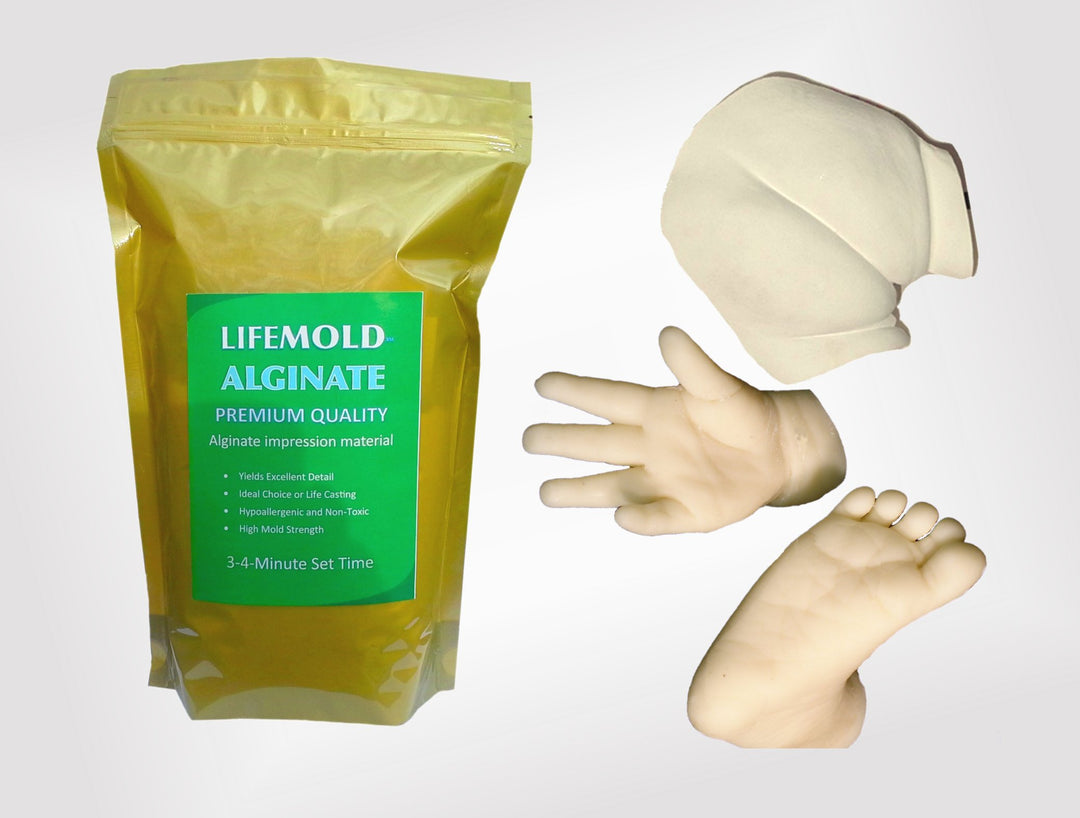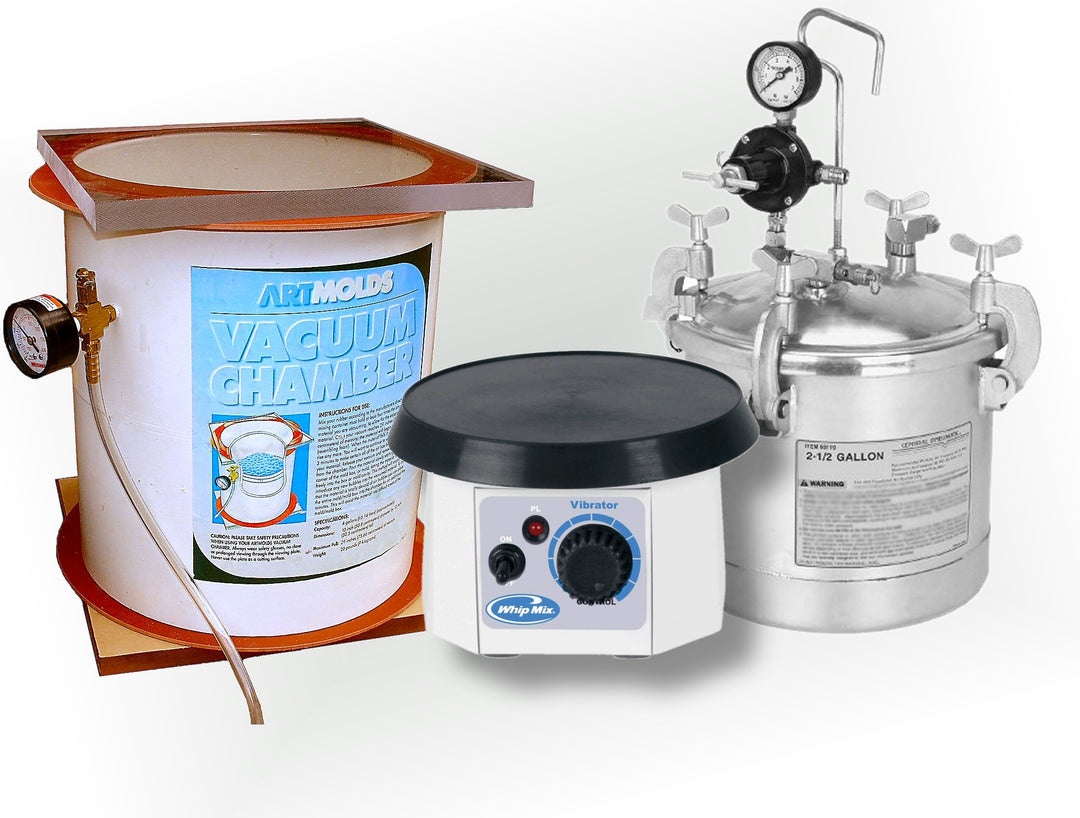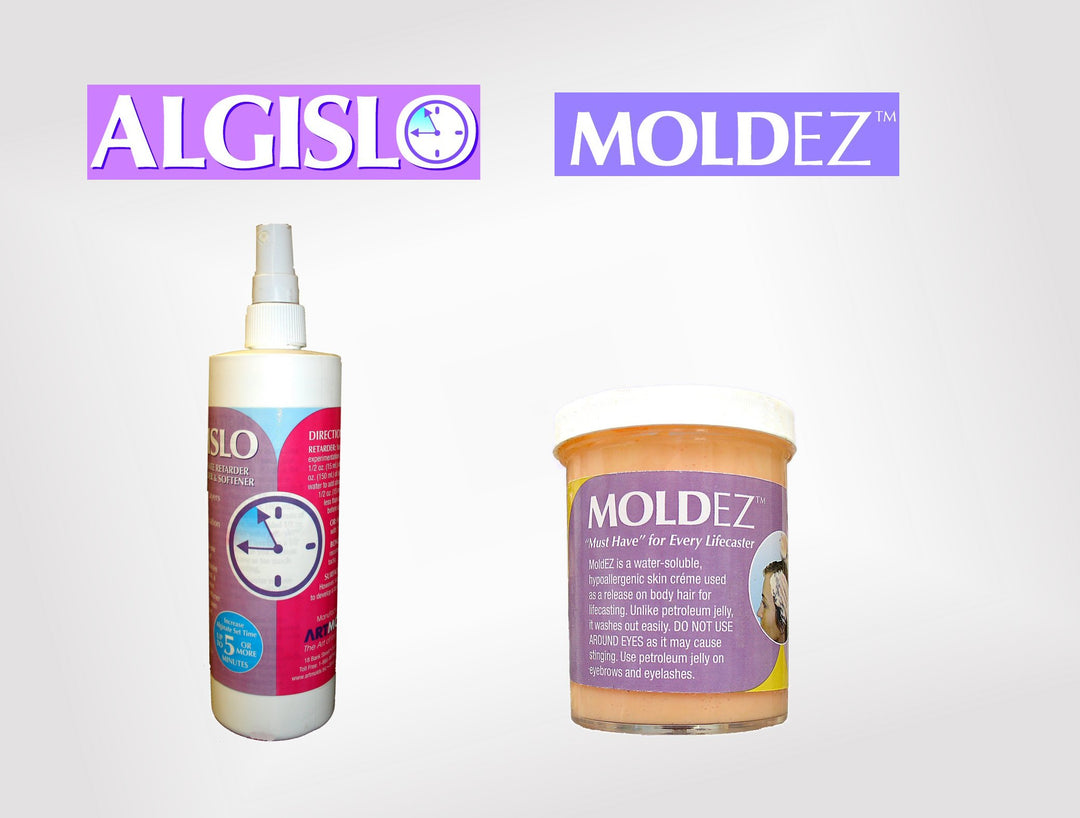Block Mold - Multi Part | Page 1 - ArtMolds

Figure 1
In this lesson we take you through the steps of creating a mold and then the casting using a two-part block mold of RTV silcone rubber for the mold and polyurethane resin for the casting. We also include a simple finishing technique that you can apply to the casting for a bronze metalic appearance.
The multi-part block mold is the more complex of mold types. The multi-part block mold technique is chosen when the model must be cast in its entirety on all sides, and due to its detail and deeper undercuts, a simple one-part block mold what be inadequate. The first, and perhaps the most important step in the mold making process is to trace tthe parting line around the entire model. This is the line where the two halves (or more) of the mold will meet after it has ben made. Therefore, great care must be taken on where to place the line for easiest de-molding. Begin by using Sharpy pen to draw the center or parting line completely around the mold as shown in Figure 1.

Figure 2
We begin by portioning off the model into two parts so that the first half of the silicone mold can be made. To do so, we will cover the bottom half of the model with soft oil-based clay. The model is laid out on a wood baseboard. Then to reduce the amount of clay used in the bedding, we have cut small wood blocks that we position around its perimeter stacking them to just short of the height of the parting line that we previously drew on the model.

Figure 3
The wooden blocks are glued into position using a hot glue gun. Make certain you are generous with the glue as you don’t want the blocks to move when you apply clay to them.

Figure 4
Note how the blocks are stacked one top of one another in Figure 4. They are stacked to bring them up to the level just short of the parting line. Now we take small piece soft oil-based clay and apply it on top of the blocks even with the parting line all away around the model.

Figure 5
Continue to add bits of clay until you have a smooth, even base of clay around the entire model. It is very import to fill in any gaps or cracks. See Figure 5 to note how the clay step up and down following the part line we created.

Figure 6
New the real work begins. Patience and care is needed as you smooth out the clay. It is important that the clay runs at a 90-degree angle to the model. If it doesn’t you will experience significant flashing we you de-mold.

Figure 7
Once you have done all you can, using your fingers to smooth the clay surface, you can use sculpting and clay model tool to further refine the smooth process. You don’t want to live and depression in the clay or or leave any clay bits behind.
Click next to continue.






